Telecom giant AT&T developed DjVu files in 1996. They’re specialized image files that store scanned documents. They are especially well suited for storing image files with combinations of photographs, text, color images, and line drawings.
On this page, we’ll explain in more detail what DjVu files are. We’ll also show you how to recover deleted or corrupted DjVu files.
What is DjVu Filetype?
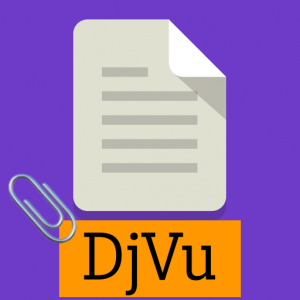
DjVu files are image files and are similar to PDF files and are frequently used as alternatives to PDF files. DjVu files split such documents into three layers: the foreground, the background, and a black-and-white mask. They hold all this information with minimal use of space, making them great for online use.
DjVu files have the extension .djvu or .djv.
How to Open DjVu Files on Mac and Windows
Unless you’re using Linux, your operating system likely didn’t come with a DjVu reader. There are plenty of programs that open DjVu files, though, and many are free.
- Sumatra PDF: This free, open-source document viewer supports DjVu as well as PDF, EPUB, and MOBI eBook filetypes, Comic Book Archive files, and many others. It’s only available for Windows.
- Okular: This viewer was developed by an international community of free software developers known as KDE. It’s a cross-platform software that works on Windows, Mac operating systems, and Android.
- DjVu Browser Plug-in: This free, open-sourced plug-in allows you to open and view DjVu files in your browser. It works for both Windows and Safari.
- MacDjView: Available for Mac, as the name applies, the MacDjView allows you to open view DjVu files with continuous scrolling. It’s completely free to download.
- WinDjView: This free DjVu viewer offers continuous scrolling, a tabbed interface, and advanced printing options. It’s only for Windows, but it has a Mac counterpart (noted below).
- MacDjView: This is the Mac version of the WinDjView application noted above.
- Canvas X: Created by Canvas GFX, this computer program is used for digital drawing, publishing, and imaging. It’s not free, but it is a much more advanced solution than most of the others listed above.
You could convert DjVu files to something more common, such as PDF. There are many such software options to select from.
How to Recover Deleted DjVu Files
You can usually get back missing DjVu files that have been accidentally deleted or lost through corruption. The reason you can restore such files is that files never really disappear, not even after they’ve been deleted. They are just transferred into a different stage of storage that allows them to be written over with new data. Until they are so overwritten that the original information is completely buried, though, you can still retrieve the missing files.
Often, the files can be recovered from a Windows Recycle Bin or Mac Trash with just two clicks of the mouse. Other times you may need to use a data recovery center or data recovery software. No matter what, you can usually recover those files.
How to Recover DjVu Files with Software
Data recovery software does the same thing as a data recovery center but for free and from anywhere. Disk Drill is the option that we prefer and the one that we’ll explore in this section. Follow the steps below to get back your missing DjVu files with Disk Drill. It’s free, fast, and easy to use.
Before getting into the process, you’ll need to download the software.
Once it’s downloaded, initiate Disk Drill as you would any application on your machine. Usually, that means double-clicking on it. In the center of your screen, you’ll see a list under the heading Device/Disk. These are all the devices that are in or attached to your computer and that can be accessed for data recovery.
- The first step to recovering your files is selecting whichever device the desired files were deleted from.
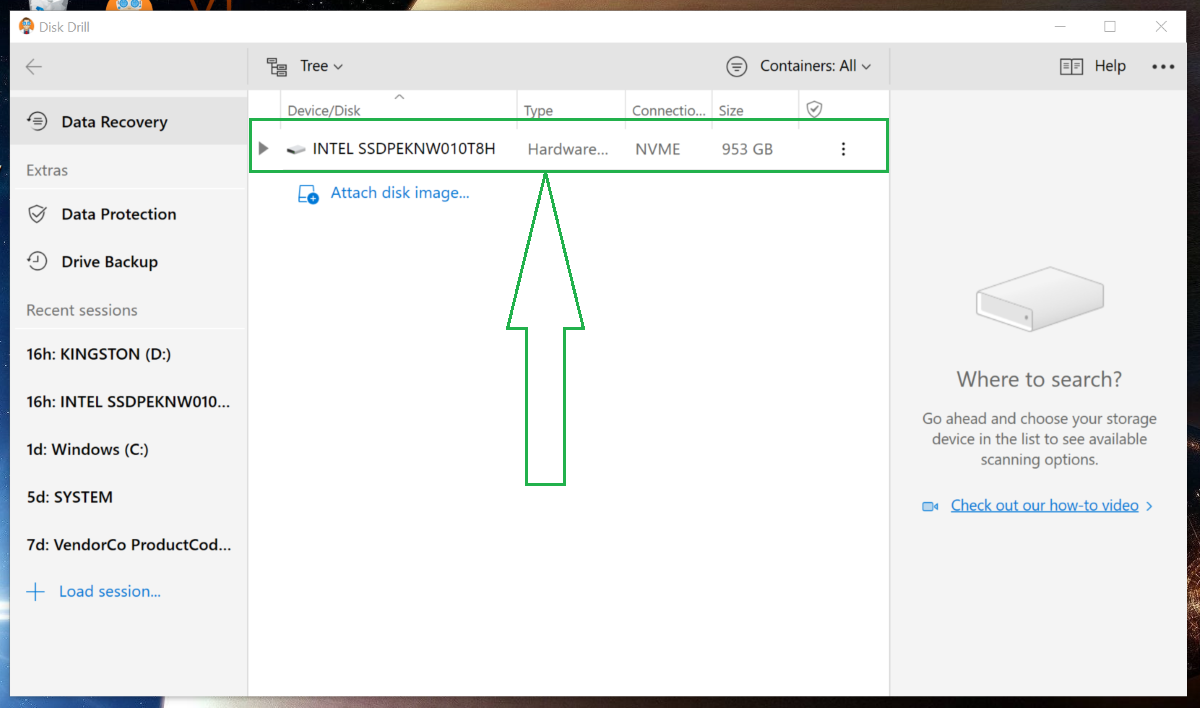
If the device has a gray arrow to the left of it, you can click on that gray arrow to get a list of finer partitions to choose from. The benefit to this is narrowing down the number of files that Disk Drill will search, which will speed up the process.
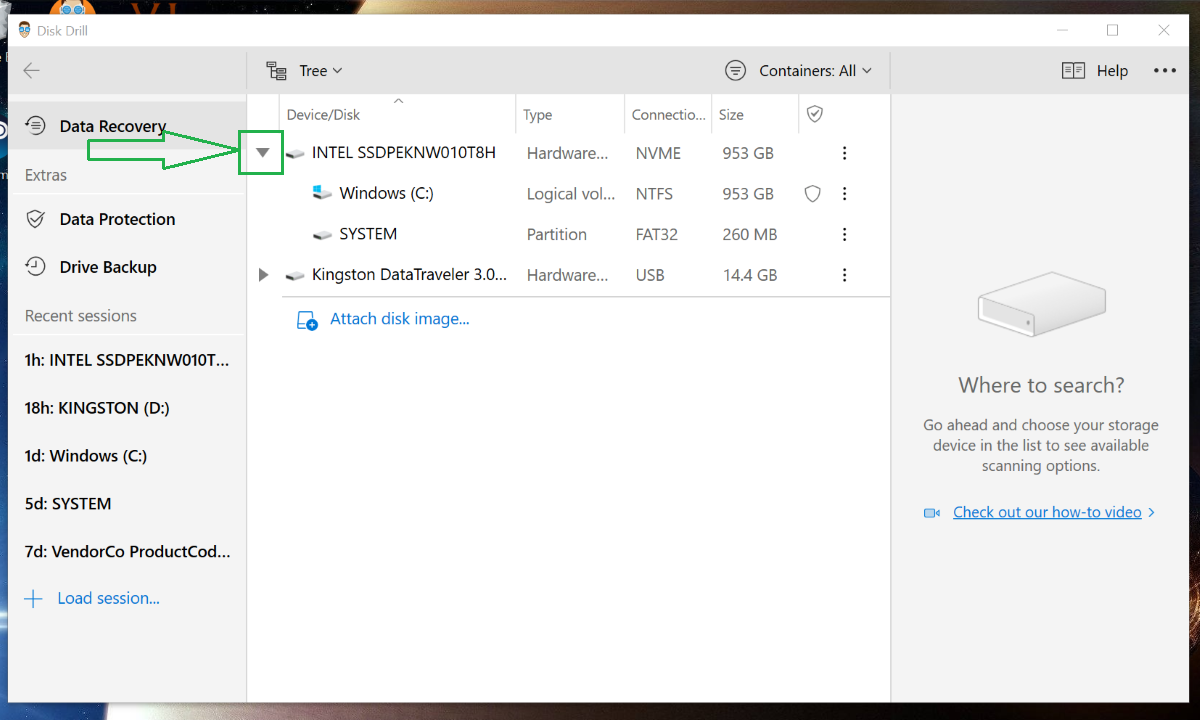
-
After you select the device, you’ll see a pane with an upper button reading All recovery methods and a lower button reading Search for lost data. The All recovery methods button directs the Search for lost data button on how to look for files. Stick with the default option for now and click Search for lost data.
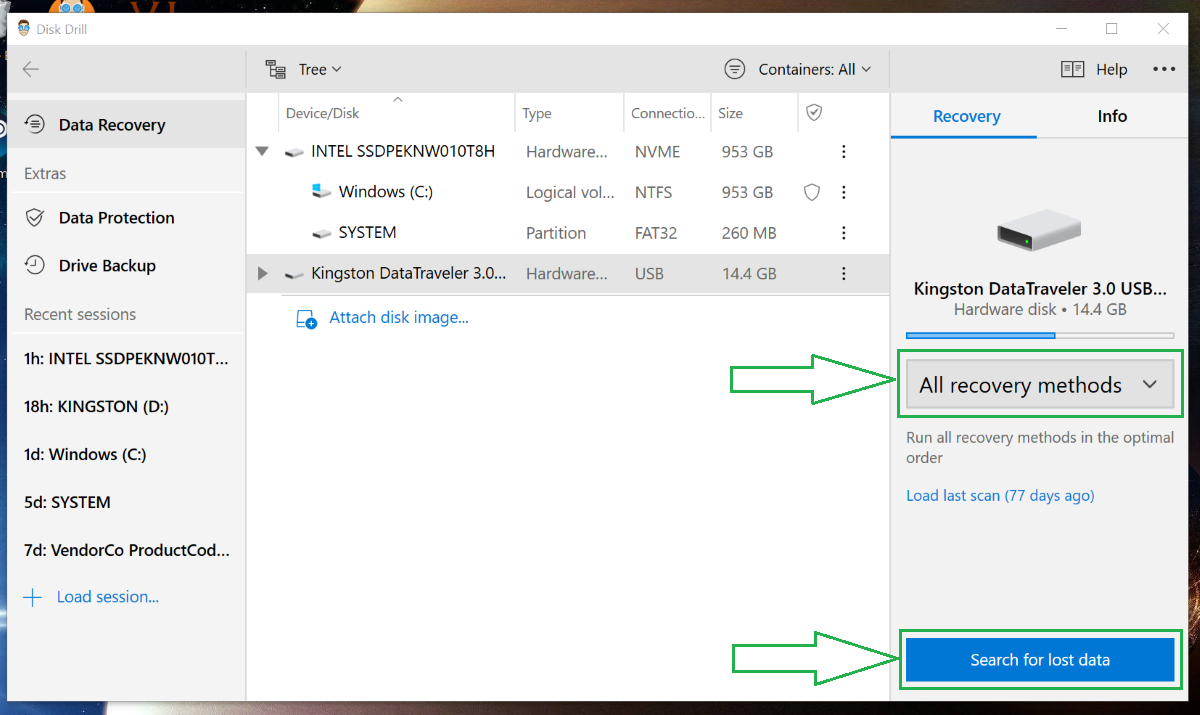
-
Disk Drill will now search through all the files in your chosen device, including all those that have been deleted. At this point you can wait for Disk Drill to scan the entire device, you can stop the scan and restore the files you want and then resume the scan later, or you can review found items while the scan completes in the background.
-
At this stage, you can either recover every scanned file by selecting Recover all, or you can retrieve individual files with Recover.
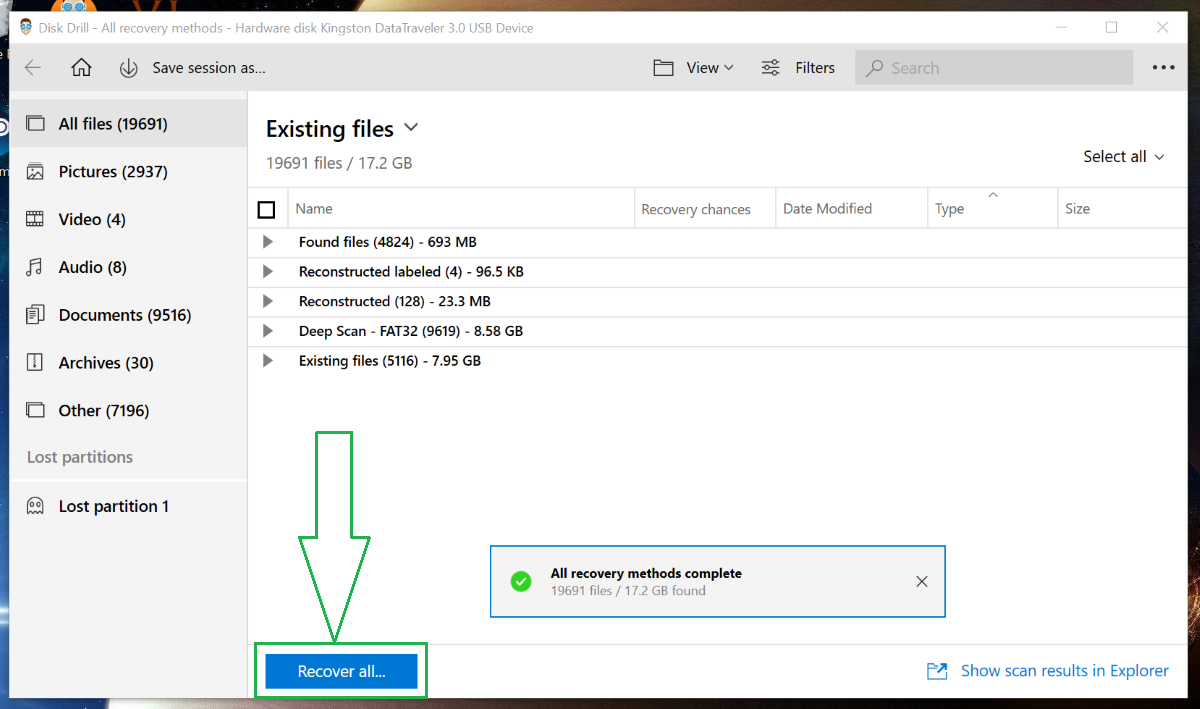
The Recover option will appear after you click on the checkbox beside Clicking the checkboxes next to the files automatically changes the Recover all bar to Recover.
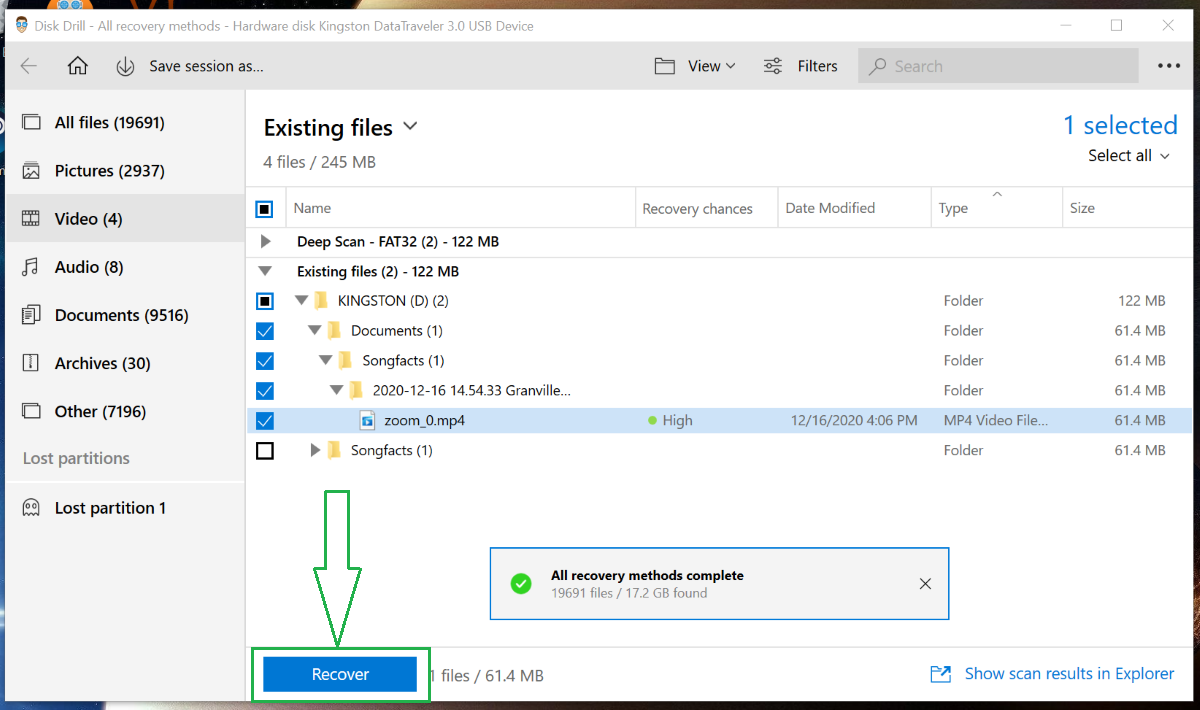
-
Whether you recover all files or individual ones, Disk Drill will ask where you’d like the files restored to. Choose wherever you’d like.
Recover DjVu Files from Windows Recycle Bin or Mac Trash
Files that have been recently deleted are usually very simple to get back. The initial stage after deletion is simply moving the files to the temporary storage of a Windows Recycle Bin or Mac Trash. Depending on your settings, your system may dump those files after a certain amount of time, but within that frame, the files are easy to get back.
Recovering Files from Mac Trash
- Find Mac Trash and open it. It looks like a garbage can and is usually on your desktop.
- Within the Trash, Control+click or right-click on the file you want to recover. A drop-down menu will appear. Choose Put Back.
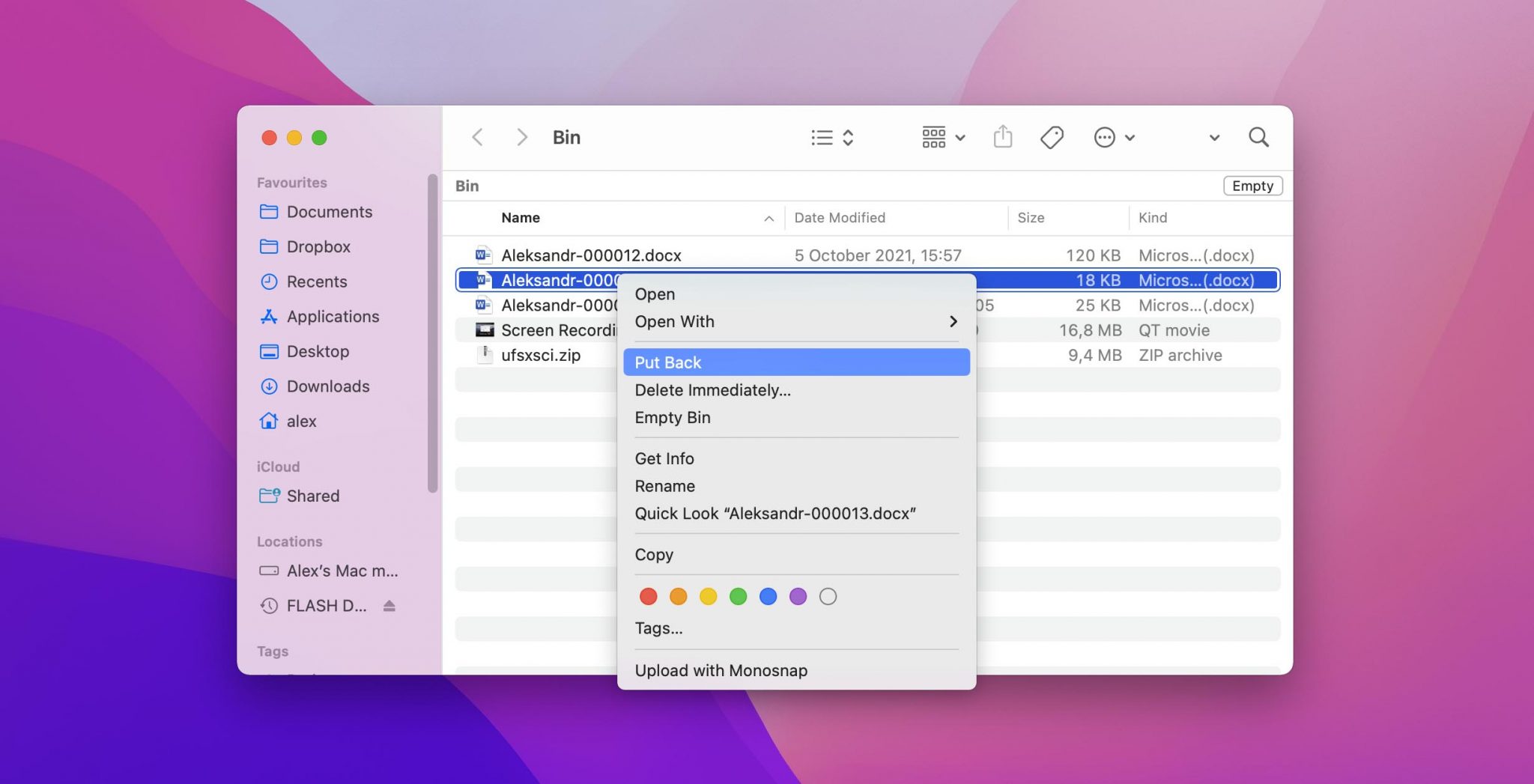
Recovering Files from Windows Recycle Bin
-
One. Open your Windows Recycle Bin. It looks like an actual recycle bin and is usually on your desktop.
-
Two. You can either right-click or double-click on the file you want to recover. Both methods give you the option to Restore the file.
Right-click Option
-
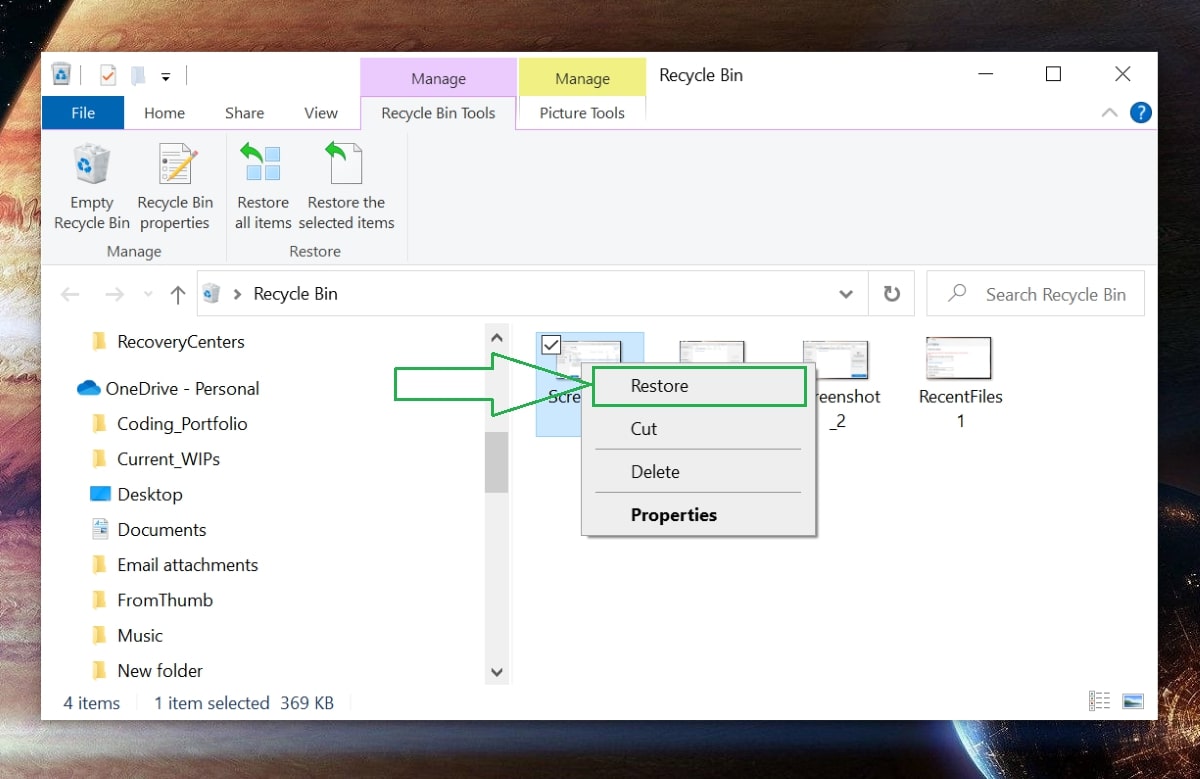
Double-click Option
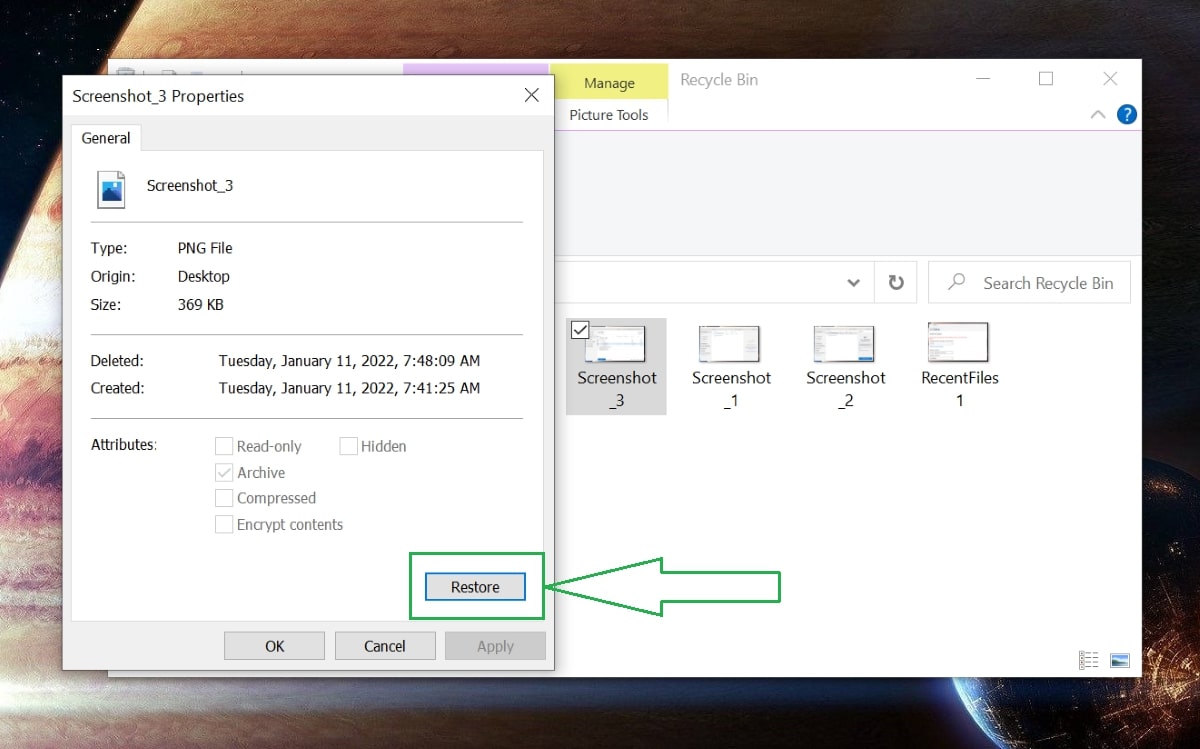
-
Click Restore. Windows will put your deleted files back in the location they were deleted from.
Restore DjVu Files from a Recent Files folder
Windows has a feature called a Recent files folder. It allows you to quickly access files you’ve recently worked on. It also allows you to restore previous versions of those files.
To see Recent files, launch File Explorer. You’ll see your list of recent files in the center pane. You can also initiate your run dialogue by pressing Windows + R. Type recent into that bar.
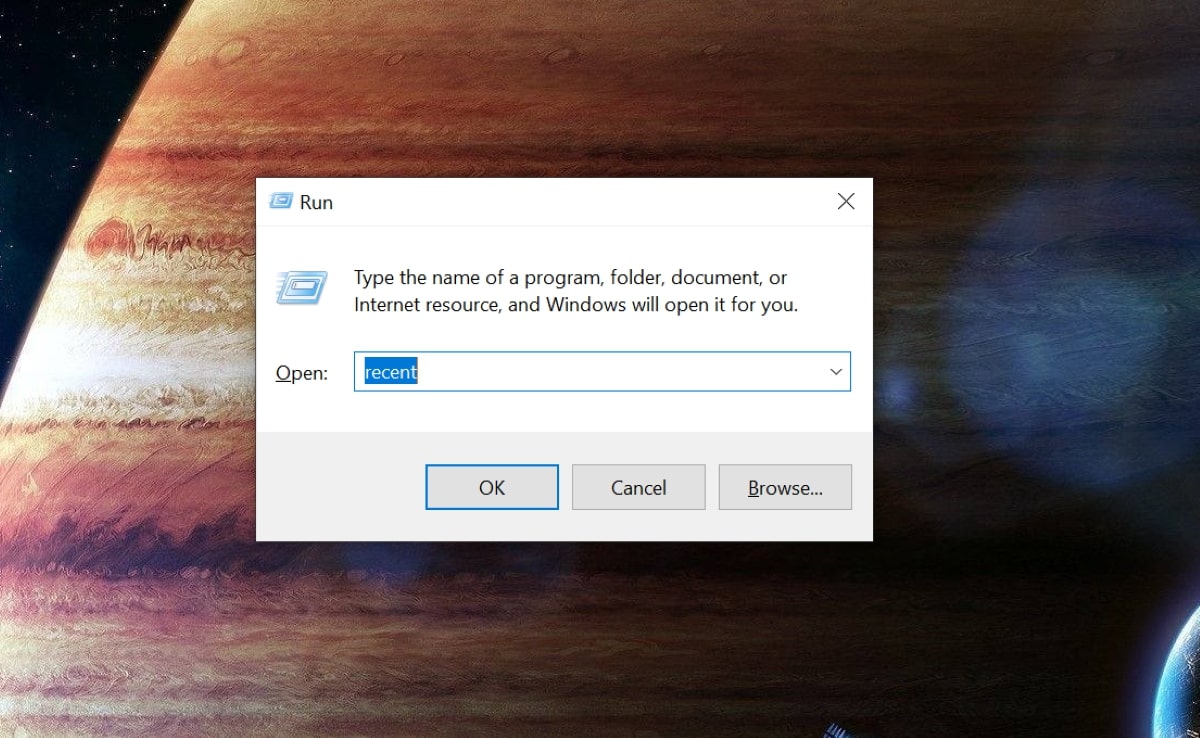
Locate the file you want to restore. Double-click or right-click on that file. Find Restore previous versions. If you have your system set to store previous versions, you’ll see a list of available iterations. Find the one nearest to the time you want to get back to. Click on it.
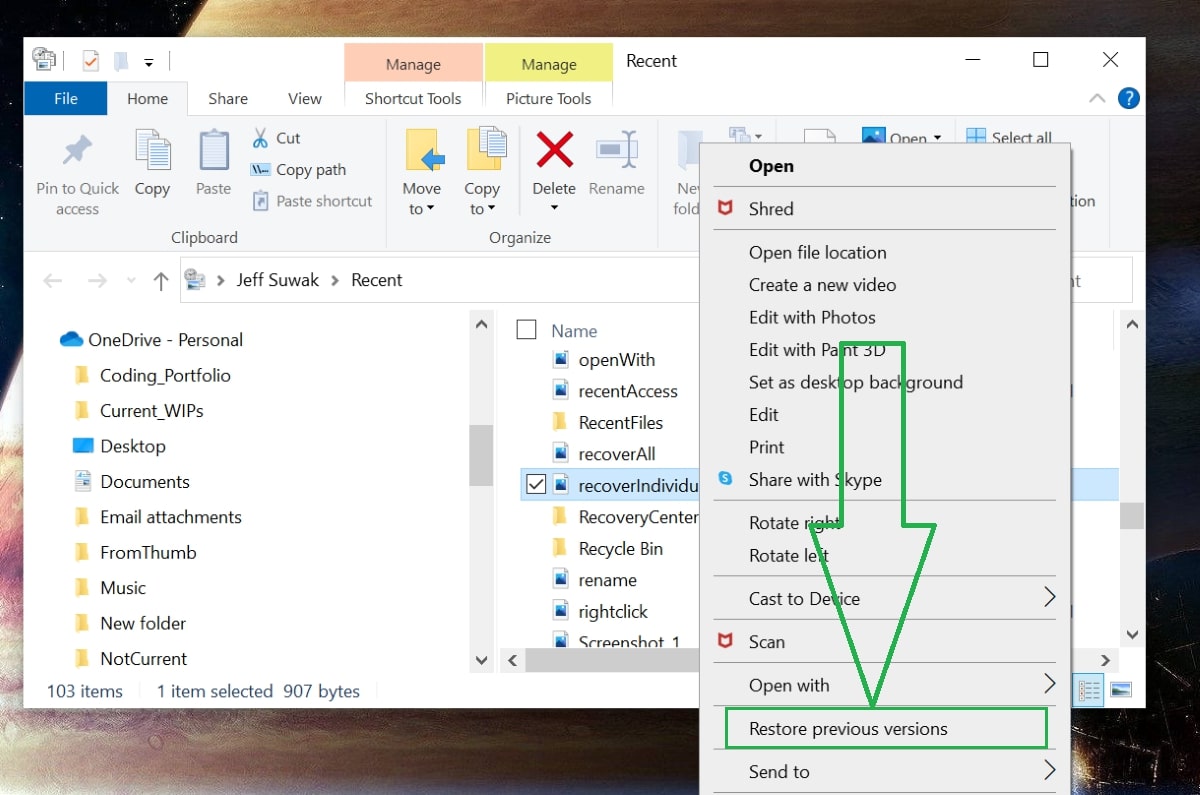
You’ll now be able to see and work on the previous version of the document.
DjVu VS PDF: What the Difference
The primary advantage of DjVu files is the smaller amount of random access memory (RAM) they require and open faster than PDFs. They achieve this speed by opening at a lower quality and then improving resolution over time.
This may become significant when you start dealing with large numbers of files. The flip side of this advantage is that DjVu accomplishes this small file size with lossy compression, meaning that it can lose some data, which can be an issue with legal documents such as contracts.
PDF has its own advantages. For one thing, the PDF format is lossless, meaning it doesn’t lose any information from the original source. PDFs are also more secure than DjVu files, with defensive systems built in to prevent unapproved manipulation. The biggest advantage of PDFs is simply that they are so widely used and accepted, which means that most systems have some form of PDF reader built into them, while most operating systems (Linux being an exception) do not come with DjVu readers.
